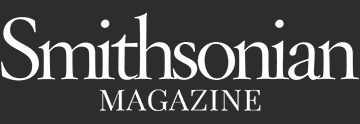Enjoy Mill Valley
Jennifer Eve Taylor’s JET ED Consulting, a Premiere Provider of Therapeutic Educational Consultative Services, Seeks to Get You the Best Options for Your Family’s Uniques Circumstances
Jennifer’s JET ED Consulting is the premier provider of therapeutic educational consultative services. Her national practice ensures you get the best options for your family’s unique circumstances. Her mission is to provide the highest level of ethics and expertise in a caring and personal way. Her consulting practice is to help parents navigate the byzantine world of navigating what is often a misunderstood modality. Jennifer’s boys were in Mill Valley Schools and she was a member of It Takes a Village Mill Valley during those years.
Did the Masters Get You in a Golf Mood? Get Your Own Green Jackets on April 21st – THIS WEEKEND – to Support Students TK-12
Did the Masters Get You in the Mood for Some Golf? Get Your Own Green Jackets on THIS WEEKEND and Join Kiddo! and the Tam High Foundation @ the MV Golf Course to support students TK-12.
Find your inner Scottie Scheffler and Tee Off for Education this weekend as Kiddo! and the Tam High Foundation gather at the City of Mill Valley Golf Course for a tournament fundraiser benefitting students from TK through high school. Drive education forward one stroke at a time and register here now! Tee Off for Education is a joint fundraising effort between Tam High Foundation, Kiddo!, and the Mill Valley Golf Course. Participating in this fun event is a great way to come together as a community in support of our elementary, middle, and high schools. For more details, visit our Tee Off for Education page.
Paul Austin’s Play Marin Hosts Players’ Night Adult Playdate, Featuring Dinner, Drinks and Plenty of Playtime – April 27th, 6-11pm at Sausalito Portuguese Cultural Center
Paul Austin: “When you come to our Players’ Night you can shoot buckets, flip cups, and dance your ** off! Enjoy wine/beer/bubbles and eat delicious snacks from Dee’s Organic Catering. Bid on an amazing variety of silent auction items – all while supporting a great organization benefiting Play Marin’s youth programs.”
Hoodline: Hearst Heir Lists Lavish Mill Valley Mansion for $6.2 Million
The estate, nestled within a verdant 5-acre lot, promises a serene retreat surrounded by towering redwoods and sweeping panoramic views that encompass Mt. Diablo, Mt. Tam, and a picturesque angle of the bay itself, according to SF Gate. Designed by local notable Sandy Walker, the 1994 construction maximizes natural light, leveraging a striking 30-foot atrium alongside a sky-reaching 20-foot skylight that enlivens the home’s interior with California sunshine. The beauty of the design is hard to ignore, even with the resplendent natural vistas that abound.
Mercury News: The Builder’s Remedy tool promised to give developers power to override local zoning — but cities are mostly holding up projects in litigation and environmental reviews, with a pair of Mill Valley exceptions
But at least one of the builder’s remedy projects comes from Marshal Rothman, a Mill Valley developer who has been trying to get Fairfax to approve a development proposal to build 10 homes on a 100-acre parcel for nearly a decade. His new proposal, which adds a stand-alone, 15-unit condominium complex, meets the builder’s remedy requirements.
The Church of Our Saviour Hosts an Potluck-Style Parish Dinner – April 28th, 5-7pm
Mill Valley’s Church of Our Saviour, located at 10 Old Mill Street with the entrance on Lovell Avenue, has long been known in town as welcoming community for those seeking to journey in faith with God’s people through the breaking of bread and in service to others in Christ’s name. On Sunday, April 28th, the church will host a potluck-style parish dinner from 5-7pm at the Church of Our Saviour at 10 Old Mill Street.
Music Lovers Rejoice: Record Store Day Returns Saturday, April 20 – and as Always, Gary Scheuenstuhl’s Mill Valley Music Has You Covered
As an exciting additional RSD-related treat, the Pacific Sun recently sat down with Scheuenstuhl for a fantastic Q&A, including this gem: “I get to listen to music every day. Being around it will always be a large part of my life. Music is forever.”
Another Smash Hit From the Real Restaurants Team: Corner Bar, Downtown Mill Valley’s New Cocktail Lounge, Debuts the Week of April 21st
The partners’ ultimate vision for Corner Bar is to “blend the authentic charm of a neighborhood bar with the sultriness of a cocktail lounge. We want to celebrate the best of both worlds and infuse a new late night energy to downtown Mill Valley.” Corner Bar’s central location near Sweetwater Music Hall, the Throckmorton Theatre, and Mill Valley Film Festival makes it the ideal destination for pre-show or post-show drinks and bites.
Upcoming Events in Mill Valley
#enjoymillvalley
Mill Valley in the Media
THE MISSION OF THE MILL VALLEY CHAMBER OF COMMERCE
To foster a vibrant community, we promote, inform, engage, and advocate for our members. We do this by creating events and content, championing vitality and equity, coaching and connecting members to spark opportunity and continuously improve our organization.
Enjoy Mill Valley is your community hub for all things MV
Explore
Events
Explore Membership
Music Festival
2024
Advertise With Us
Mill Valley Chamber of Commerce & Visitor Center
85 Throckmorton Avenue
Mill Valley, CA 94941
415.388.9700
Hours
Tuesday, Thursday, Friday & Saturday
noon - 4pm
info@millvalley.org














